Trip to Sognefjorden
Part four, Lom
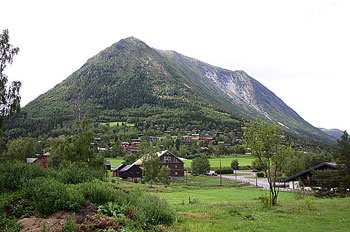


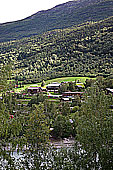

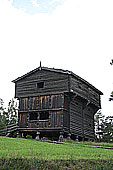
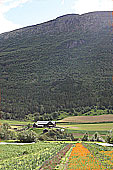

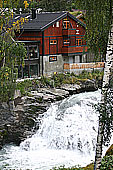
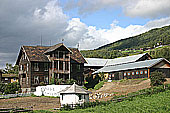
Lom is the "gateway" to the Jotunheimen Mountains and to Jotunheim National Park. The municipality contains the two highest peaks in Norway, Galdhøpiggen (2469 m) and Glittertind (2464 m), which lie within the park.
Lom is bordered on the northwest by Skjåk, in the north by Lesja, in the east and southeast by Vågå, in the south by Vang municipalities in Oppland. In the southwest it is bordered by Luster municipality in Sogn og Fjordane county.

An ancient trade route passed up from Sunnmøre through Lom and Skjåk and down the Gudbrandsdal into the Østlandet. The trade consisted of fish and salt heading inland, and grain heading to the coast.
The Saga of Olaf Haraldson relates that St. Olaf commented as he first looked down on Lom, “What a pity to have to lay waste to such a beautiful valley.” In the face of such a clear motivation, the residents of the valley converted. St. Olafs-stuggu, a building were St. Olaf is reported to have spent a night in 1021, can still be found here. The building is part of the Presthaugen District Museum.
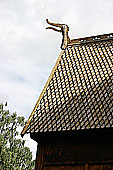
Lom stave church, which is located at Lom center, was built around 1150 - 1200. It was extended in 1634, with further addition of two naves in 1667. It is believed that the church was originially surrounded by a circumambolatory passage, like many other Norwegian stave churches, but that this passage was removed when the two side wings were added. A few Runic inscriptions can be still be seen in the church. The church also contains numerous paintings from the 17th and 18th centuries with religious motifs. Many of the paintings were made by local artist Eggert Munch, a distant relation of the famous Edvard Munch. The church also contains numerous examples of local woodcarving, as seen in the elaborate acanthus scrolls adorning the pulpit. Carved dragon figures on the roof are old symbols of protection against evil. It is still in use as the local church.
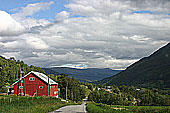
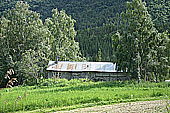
(part one) (part two) (part three)
(Stryn) (Vågåmo) (Geiranger) (Gudbrandsdalen)
